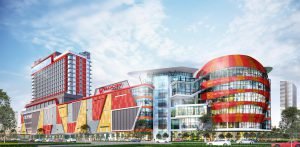KAF launches Islamic property fund in Malaysia
Australian Islamic investment company Crescent Wealth has partnered with KAF Investment Funds Bhd to launch the KAF Australian Islamic Property Fund (KAIPF), and is confident of achieving 9-10% annual return to investors. Its target is driven by projected returns and capital appreciation of commercial properties in Australia and the appetite of Malaysian investors for Australian property. Malaysian investors are looking overseas for exposure and diversify away from the ringgit. Recent data from Australia’s Foreign Investment Review Board found that Malaysia was the fourth largest source country for approved Australian property investment after China, the US and Canada. The KAIPF is Malaysia’s first fund that provides non-institutional investors direct access to Australian commercial property. (The Sun Daily)
Perak to help subsidise low- and medium-cost housing projects
The Perak government is prepared to subsidise the compliance costs to develop low and medium-cost housing projects larger than 8.09ha (20 acres) in an effort to create more affordable housing in the state. Perak Housing and Local Government Committee Chairman Datuk Rusnah Kassim said the state government was aware that compliance charges are among the contributors to rising cost of housing. If developers are willing to build cheap housing on 20 acres, the government should be able to help lower their costs by lowering land premiums and waiving development charges as well as National Water Services Commission (SPAN) charges. The reduced costs would benefit the people. Perak has set a target to build 35,500 affordable houses and currently 26,020 houses have been built with another 15,122 units in progress. (The Star Online)

(Image from Sunway Property)
Sunway Velocity Mall to have full occupancy by mid-2017
Sunway Velocity Mall in Cheras, which will open on Oct 28, is expecting to operate with full occupancy by the first half of 2017. Sunway Shopping Malls & Theme Parks CEO H.C. Chan said the shopping centre had already secured a strong list of anchor tenants and is confident of “filling up the mall” despite oversupply concerns. It has already secured an occupancy rate of 85%, with big-name brands such as Parkson, TGV Cinemas, Harvey Norman, Popular and Toys “R” Us. One of its closest competitors will be MyTOWN Shopping Centre, which will open on Nov 15 and is located just 800m away. However, Chan said the existing and upcoming malls in the vicinity would compete but also complement each other and turn Cheras into another vibrant shopping haven – just like Bukit Bintang. According to reports, about 40 malls would be entering the market in greater Kuala Lumpur by 2020, of which a dozen would have an NLA of 1 million sq ft. (The Star Online)
O&C Resources unit bags RM101mil PR1MA deal in Melaka
O&C Resources Bhd’s unit, Kita Mampan Sdn Bhd, has won a RM101.08 million contract to build affordable houses under the 1Malaysia affordable housing scheme (PR1MA) in Alor Gajah, Melaka. The 3-year contract is to build and develop 554 residential units in five apartment blocks of 11 storeys each, and one 12-storey apartment block. (The Edge Markets)
OSK Property remains hopeful in challenging economy
OSK Property is finding it challenging to meet its RM1 billion sales target this year due to shifts in the global markets and a gloomy economy. There was no indication of the group’s sales for the year so far, but group CEO Ong Ghee Bin said the property market should also look at consolidating with other players to gain a stronger footing. The group has projects with GDV of RM18 billion across Peninsular Malaysia and in Melbourne, Australia. Ong is optimistic about the impact of the recent OPR reduction on the company’s business, but said it was too soon to tell whether it would help achieve its sales target this year. (New Straits Times Online)
Malaysians spend nearly one-third of income on food
Malaysians are spending nearly a third of their disposable income on food, according to Finance Minister II Johari Abdul Ghani. Malaysians 31.2% of disposable income in food and eating out, followed by 23.9% on petrol, housing and utilities, while transport take up 14.6%. With the change in lifestyle of youth today, the list of necessary goods today includes cars, handphones, computers and Internet access. With the increasing cost of living, the B40s (bottom 40%) and M40s (middle 40%) are finding it difficult to sustain their standard of living. (MalaysiaKini)





